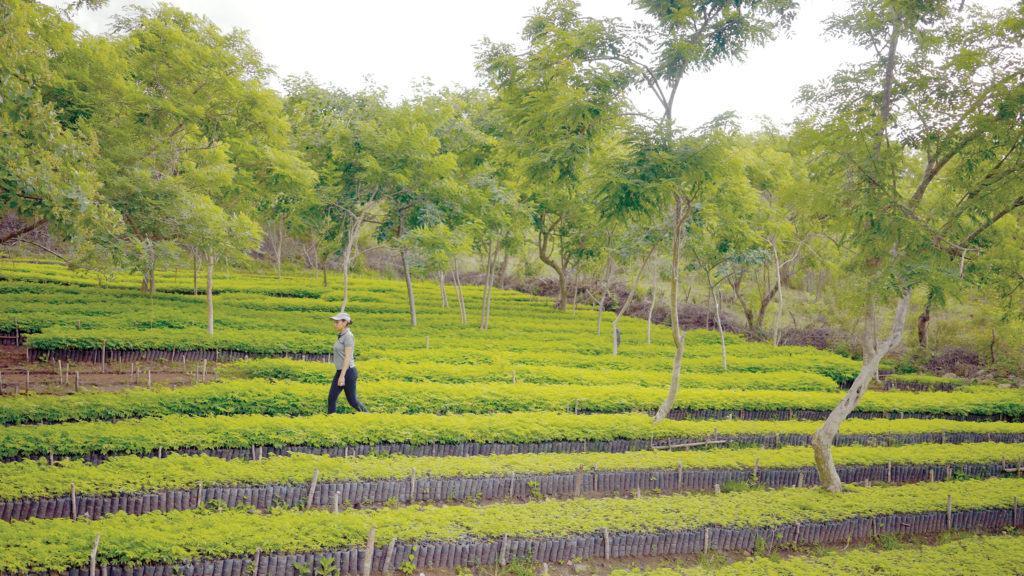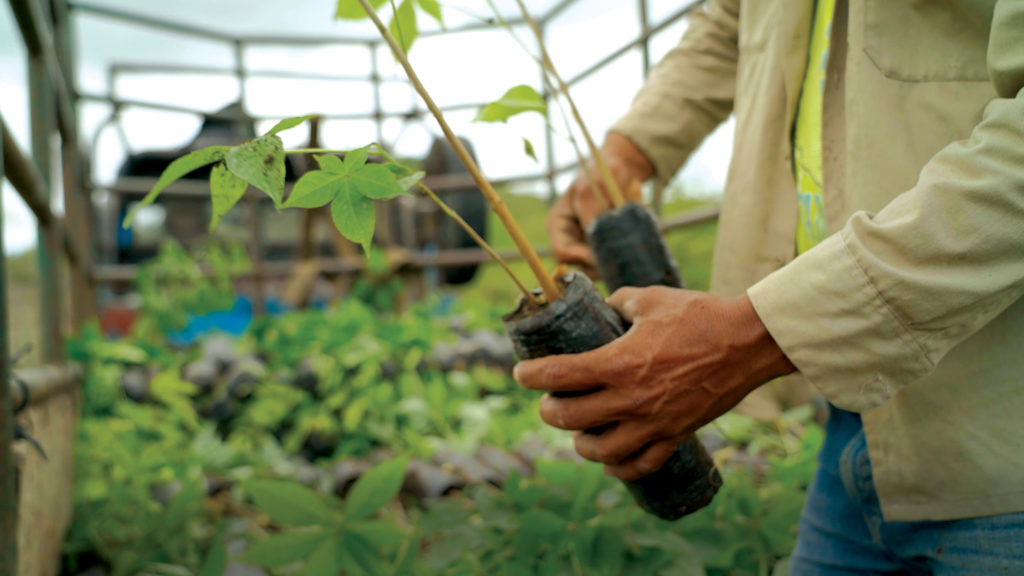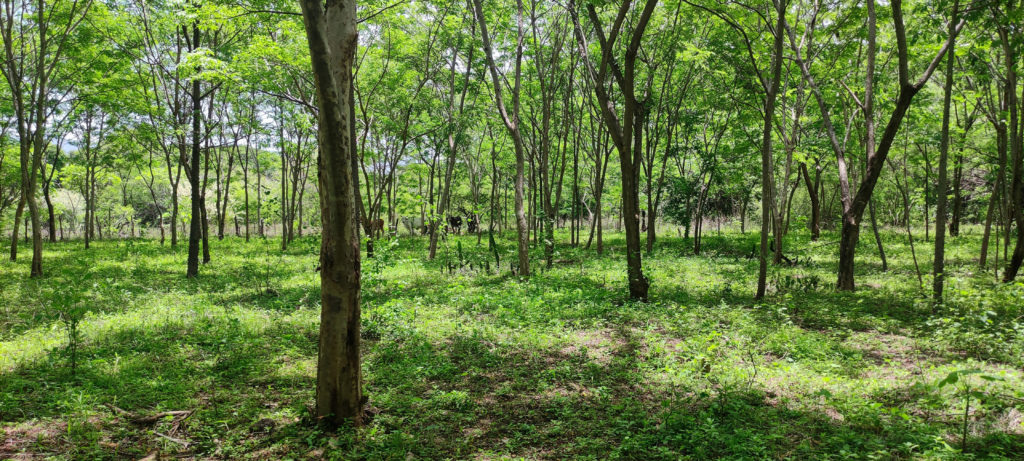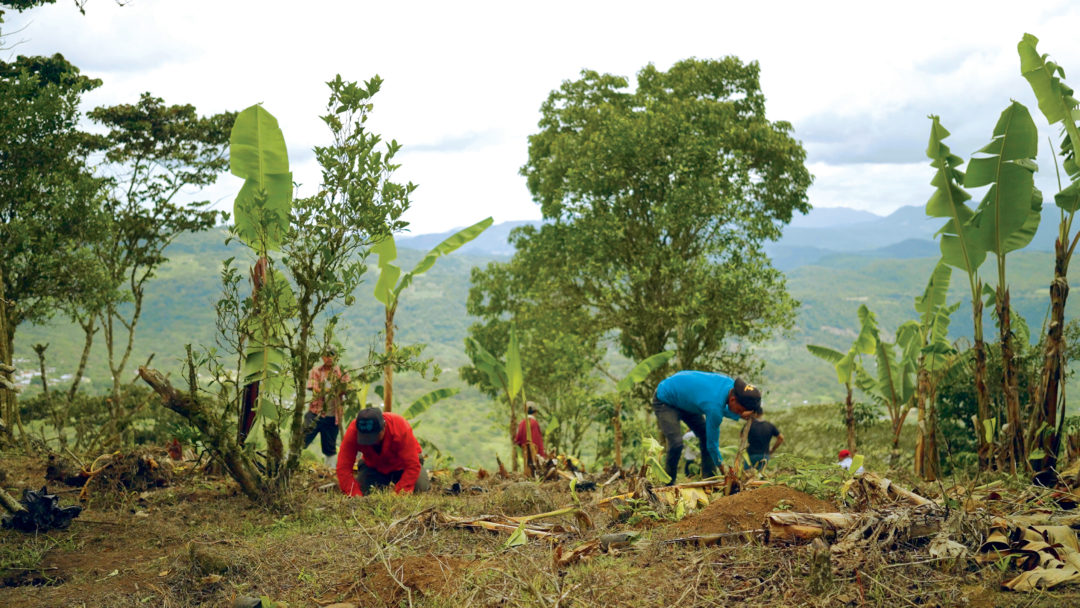Restoring Forestlands and Supporting Farmers
The largest country in Central America, Nicaragua offers a beautifully diverse landscape. Beaches, volcanoes, forests, and mountains all coexist in a space slightly larger than the state of New York.
But as with many countries near the equator, Nicaragua is facing the destruction of its forest canopy cover. According to Global Forest Watch, the total area of humid primary forest in Nicaragua has decreased by approximately 25% from 2002 to 2020. By definition, a primary forest is an untouched forest in its original condition and is the most biologically diverse forest type.
The Arbor Day Foundation has partnered with Taking Root to help plant trees in Nicaragua, restoring forest cover and preserving the integrity of this land. And a key component of making this a reality is local farmers.
This work is part of an initiative called the CommuniTree Program, the largest reforestation initiative in Nicaragua. More than 2,000 smallholder farmers play an integral role in these efforts, as they are actively planting and preserving trees in conjunction with their agricultural practices. The overall goals are critical for the country: mitigate climate change, improve farmer livelihoods, and restore local forest ecosystems.
When asked about this work, field technician Madelyn Patricia Centeno Cruz shared insights into what Nicaragua is facing. “It is very important not only for the environmental, economic, and social aspects. In this case, Nicaragua is one of the poorest countries in the world. We are going through climate change crises; the effects of climate change are affecting us drastically.”
Also Read: Saving the Monarch Butterflies

Opportunities in the Trees
Together, we are working to help restore the canopy cover, and the benefits of these efforts are far-reaching. One big environmental benefit is cleaner water. Madelyn explains that this work is important
because, “we increase water resources, which is one of the main environmental problems here in Nicaragua. There are polluted waters, and there are any municipalities that unfortunately no longer
have water resources.”
Overall, the farmers are dedicated to helping improve the environment. “I am very proud to help all those producers who have a desire to reforest, who have a desire to improve their farms,” Madelyn said. “I like to work hand-in-hand with the producers, learn from them as they learn from me.”
In addition to the feelings many of these farmers have about the importance of restoring the land, this work is also providing much-needed additional income. Through CommuniTree’s carbon offset program, farmers are paid over a 10-year period for growing and maintaining their trees. In addition, the trees they grow generate forest products such as coffee, biochar, and fruit that farmers can sell to increase and diversify their incomes.
This is the kind of financial stability that can ensure a better life for not just the farm families but their entire communities, as farmers here earn as little as $2 per day. It is also the kind of forestry practice that will ensure improved forest cover for generations to come.
For Marcel Ali Montoya, another field technician working directly with farmers, this is what makes his job so rewarding. “We are happy when we go to a producer and tell him that there is a forest incentive, that it’s going to help make his standard of living different,” he said. “It fulfills us because we are seeing a big change, both in them and us.”

Measuring Impact
To help measure and verify this work, Taking Root has developed an industry-leading technology platform. Information such as number of trees planted and metric tons of carbon stored can be easily tracked to highlight the environmental impact. The platform even allows partners to see specifics about the work each participating farmer is doing to restore the tree canopy on his or her land and how that land is currently being used. The detailed reporting is a clear way to illustrate the true impact of any given project and the program as a whole.
This provides unparalleled levels of transparency to help tell the larger story of change these tree planting projects are making possible.

Room to Grow
The success seen so far in Nicaragua is just the beginning of the story. As these farmers continue
to reestablish forest cover, the environmental and economic benefits will continue to improve the
country as a whole — in addition to preserving a precious ecosystem that benefits the world.

